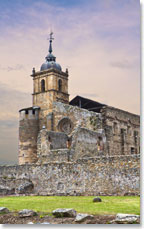 The fasting saints of the Middle Ages are considered holy men and holy women by the Catholic Church. Ironically, the same church viewed many of them with extreme skepticism—at times denouncing them—primarily because of their extreme fasting.
The fasting saints of the Middle Ages are considered holy men and holy women by the Catholic Church. Ironically, the same church viewed many of them with extreme skepticism—at times denouncing them—primarily because of their extreme fasting.
In her thesis, A Thin Body Carries the Most Definition(s): Reconceptualizing Voluntary Self-Starvation as an Act of Resistance, Jane Nicholas (2000) proposed that the Catholic Church condemned fasting due to the perceived power that it gave to the women who fasted:
The Church had political reasons for opposing voluntary self-starvation. Women who self-starved gained power over the clergy as they undermined the authority of the clergy by partially evading them. It was Church dogma that the only way to God was through clergy. (p. 18)
Nicholas’ thesis is intriguing because it suggests that some who fast for religious reasons may also be politically motivated. Nicholas went so far as to assert that the female fasting saints were attempting to make a political statement with the frail appearance of their bodies.
In the book From Fasting Saints to Anorexic Girls: The History of Self-Starvation, Walter Vandereycken and Ron von Deth (1994) said the fasting saints’ contemporaries considered them to be “God’s chosen ones, with whom He communicated” (p. 25). In order to establish this special relationship with God, many fasting saints went to extreme lengths, only breaking fasts when they received the holy Eucharist or small amounts of bread or wine.
The fasting saints created both negative and positive biases toward fasting during the Middle Ages. Medieval authors explained fasting as supernatural in nature, inspired either by miracles or demons. At the same time, not eating during this period was seen as a natural occurrence, not as a condition to be cured.